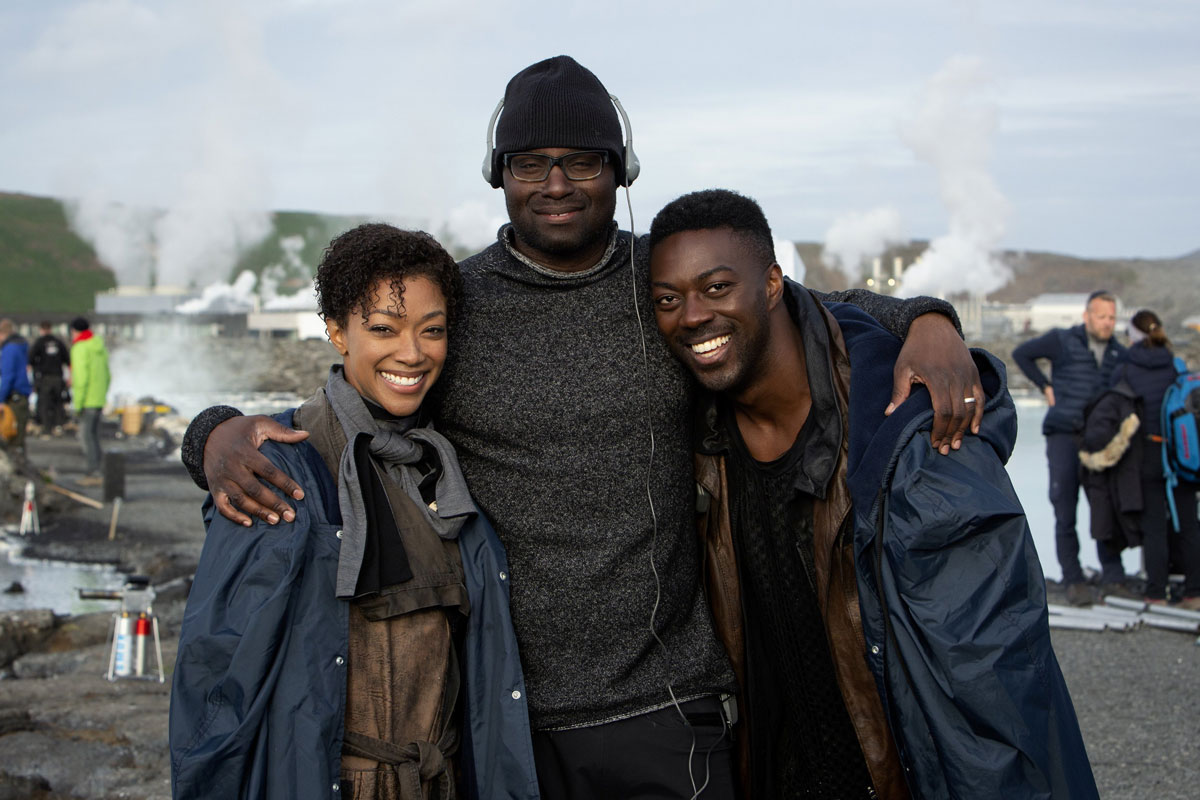Star Trek: Discovery took a lot longer than expected to get Season 3 out to viewers, thanks to the complicated challenges brought on by the coronavirus pandemic — and now we’ve got some more details about the work needed to bring the series back to Earth.

As has been widely reported, principle photography on Discovery Season 3 ended just shy of two weeks before continent-wide lockdowns shut down the United States and Canada, meaning there was no chance for the show’s filmmakers to go back in studio for “pickup” shots — needed bits of filming with actors and props, identified during the post-production editing process, typically shot days or weeks after the original shoot dates.
Speaking to IndieWire, Discovery showrunner Alex Kurtzman explained that because those shots were needed — but weren’t possible to film in person — the Discovery visual effects team managed to create them through the use of extensive digital effects including creating motion-capture-based doubles of the Discovery cast when it wasn’t safe for the actors to go in front of cameras.
There was no ability to do pick-ups for inserts or connective reaction shots, so meticulous computer-generated images were used to double characters and create a sense of visual continuity even when coverage hadn’t been there.
“The visual effects team was extraordinary, because there are some shots that you will never know aren’t practical, aren’t actually shot on location, that are full CG shots, full CG elements of things that would typically have been an insert,” Kurtzman said.
These aren’t entirely CG doubles for the actors, though. Each actor who needed pick-ups received motion-capture equipment to finish elements of their performance at home.
For those inserts, Kurtzman said, “It’s an actual actor at their home motion-capture studio, which then gets rendered in the computer as a living thing. It’s a real person… Each of our actors have been scanned, so we can actually impose their faces on a body, which is quite something.”
In addition to the filming challenges, the need for the entire post-production process to be done from the Discovery crew’s homes meant that home offices became editing bays, recording studios, and screening rooms to work through the laborious Season 3 process… which is still being worked on even now as episodes have started to air.
“Our editors, miraculously and heroically, took their editing bays into their living rooms,” Kurtzman said. “And we cut the entire season, in collaboration, just the way I’m talking to you right now. We also scored the entire season, mixed the entire season, color timed the entire season, all from this laptop [over which this Zoom interview occurred].”
Composer Jeff Russo sent microphones to each of the orchestra members’ homes so that they could record their individual parts and they could all be mixed together later on, as if playing in unison. Kurtzman and Paradise reviewed visual effects with VFX supervisor Jason Michael Zimmerman several times a week. Creating VFX even under normal circumstances takes 8-10 months per episode, and work on Season 3’s VFX continues.
Looking ahead to the upcoming fourth season of Star Trek: Discovery, set to start production in Toronto on November 2, the challenges of coronavirus protection demands are evident at the Pinewood Toronto soundstages, as actor Emily Coutts (Keyla Detmer) shared on social media earlier this week:
#StarTrekDiscovery's Emily Coutts (Detmer) is in preparing for Season 4 filming prep, starting November 2
Photo via Instagram Stories: https://t.co/8CJ9qzxEGB#StarTrek pic.twitter.com/z060sLAs0r
— TrekCore.com 🖖 (@TrekCore) October 19, 2020
While the barren deserts of Jordan or the volcanic beaches of Iceland are obviously out of the question for the next year of production, that doesn’t mean the Discovery crew won’t be able to virtually visit some of their own strange new worlds in the future.
Kurtzman revealed that the production team is likely to be getting their own augmented-reality wall to nearly have a holodeck on set for Star Trek filming.
The kind of international location shooting we saw in Season 3’s first episode is out, but Kurtzman noted, “it looks like we are going to be getting an AR wall for future seasons of ‘Star Trek’ on multiple shows.”
Essentially an enormous bank of ultra-HD television screens, the technology uses its lighting and visual capabilities, combined with computer ties to filming equipment, to virtually place live-action actors “inside” digital worlds to make their artificial construction nearly seamless.
A cylndrical take on the “AR wall” concept was popularized by the Disney+ Star Wars live-action television series The Mandalorian, where an enormous cavern of the technology was used to integrate the cast into alien worlds and deep space.
Sounds like the perfect way to keep expanding the final frontier.
![]()
Star Trek: Discovery returns for the third episode of the season, “People of Earth,” on October 29 exclusively on CBS All Access (USA) and CTV Sci Fi Channel (Canada); episode then arrives October 30 on Netflix for all other global regions.
